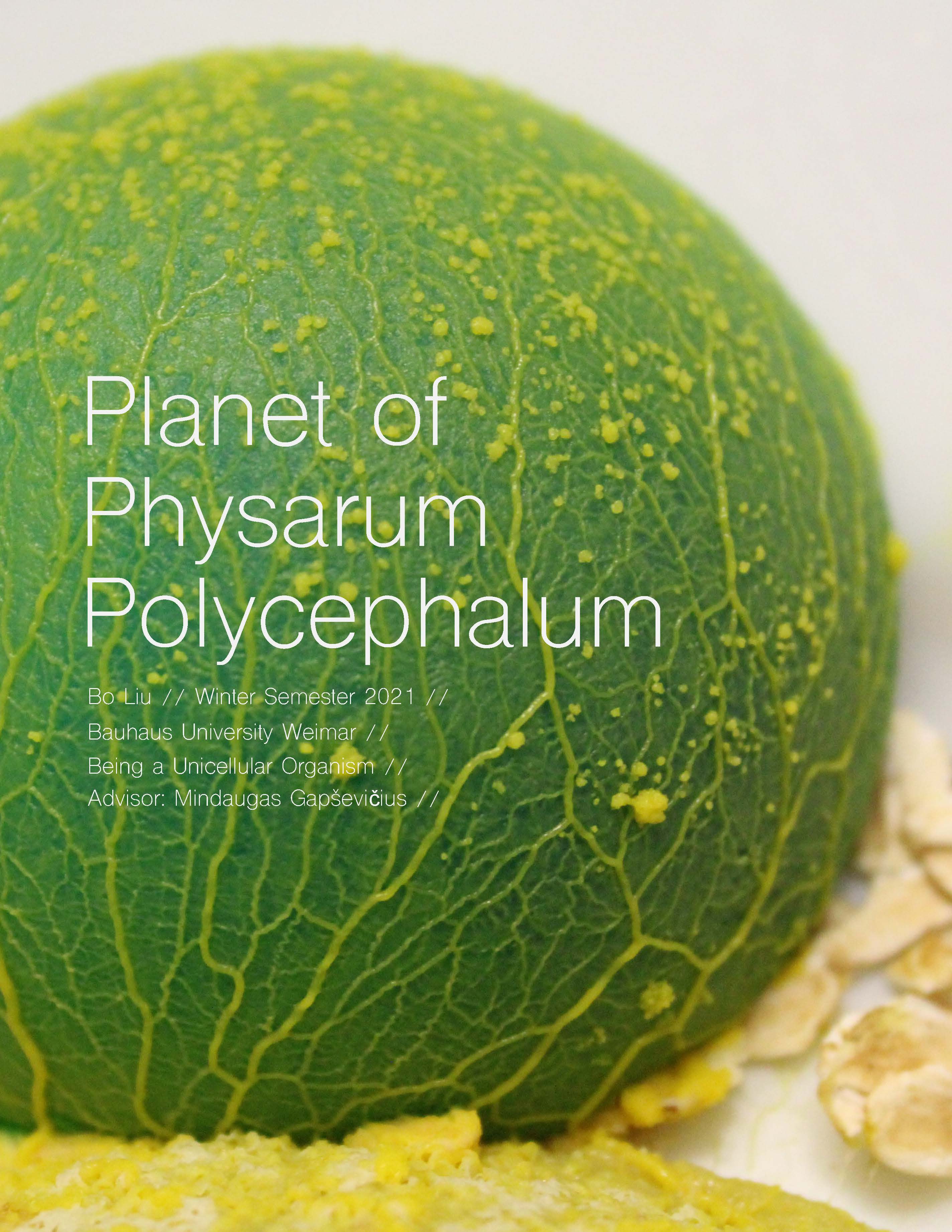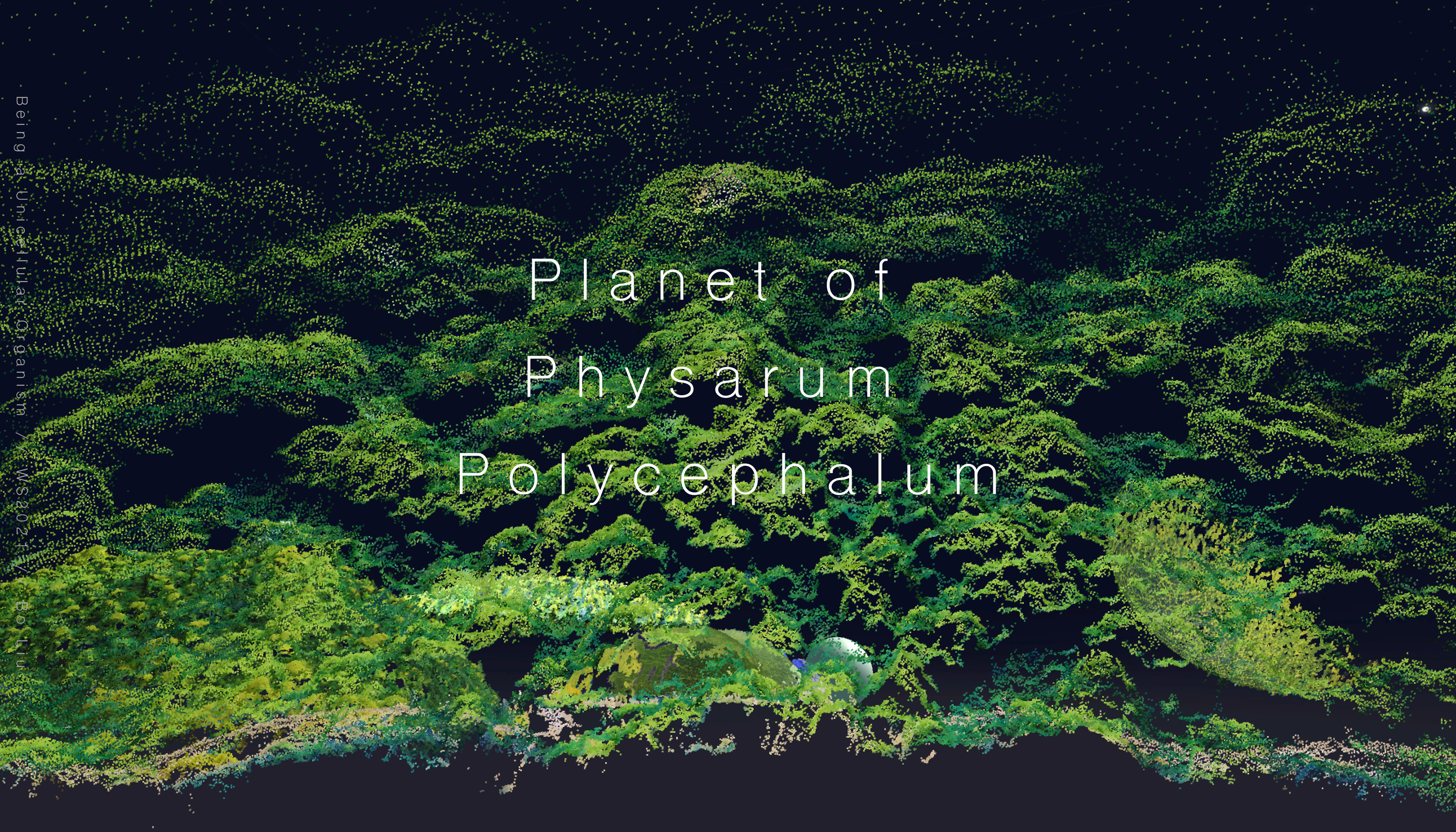No edit summary |
|||
| (16 intermediate revisions by 2 users not shown) | |||
| Line 1: | Line 1: | ||
''' | =='''Planet of Physarum Polycephalum'''== | ||
==//Project Description== | |||
In this project, by growing and culturing a unicellular organism — Physarum Polycephalum, the growth process and growth patterns were recorded through camera. The tiny single-celled organism developed from very small baby to lush and strong by consuming food on blue agar balls, and eventually become sick and wilt. | |||
In the detailed documentation of the cultivation process, the reader is expected to browse not only aesthetic images, but also to understand the metaphorical earth in which humans live. | |||
For a detailed description, please check the online brochure via the link below. | |||
[[File:PlanetSlimeCover.jpg]] | |||
==//Gallery== | |||
<gallery> | <gallery> | ||
File: | File:16的副本.jpg|''01'' | ||
File: | File:24的副本.jpg|''02'' | ||
File: | File:25的副本.jpg|''03'' | ||
File: | File:27的副本.jpg|''04'' | ||
File: | File:28的副本.jpg|''05'' | ||
File: | File:29的副本.jpg|''06'' | ||
File: | File:31的副本.jpg|''07'' | ||
File: | File:32的副本.jpg|''08'' | ||
File:34的副本.jpg|''09'' | |||
File:33的副本.jpg|''10'' | |||
File:36的副本.jpg|''11'' | |||
File:37的副本.jpg|''12'' | |||
</gallery> | </gallery> | ||
==//Brochure Online== | |||
Project Brochure uploaded on issuu -- link: [https://issuu.com/boboleo/docs/planet_of_slime_mould] | |||
==//Contents== | |||
'''I Introduction to Physarum Polycephalum''' | |||
'''II First time in Bio Lab''' | |||
'''III Feeding and Growing Process''' | |||
'''IV Initial Project Idea and Sketch''' | |||
'''V Failed and Effective Attempts''' | |||
'''VI Final Results''' | |||
// | ==//PDF Documentation== | ||
[[File:Planet of slime mould.pdf]] | |||
// | ==//Time Lapse Videos== | ||
[https://www.youtube.com/watch?v=uVuFt2cY-L0| 1.st time lapse_10 hours] | |||
// | [https://www.youtube.com/watch?v=r828_4tVc40| 2.nd time lapse_12 hours] | ||
[https://www.youtube.com/watch?v=6G8Hc8MdbvM| video 1 slime mould on agar ball] | |||
[https://www.youtube.com/watch?v=OpXfYtsAkWg| video 2 slime mould on agar ball] | |||
[https://www.youtube.com/watch?v=gkHzxJy4Q1M| video 3 slime mould on agar ball] | |||
== | ==//Further Idea== | ||
[[File:PlanetSlimeCover2.jpg]] | |||
[[File: | Based on the first stage of cultivating the slime mold and recording its growth pattern at each life stage, a further idea emerged: to scan the slime mold at different stages through photogrammetry, then import the obtained 3D model into the game engine in order to get an immersive experience, allowing the audience to observe the slime mold closer. [[File:sketch-slime.pdf]] | ||
{{#ev:youtube|E-AxadG30Pw}} | |||
Latest revision as of 20:05, 23 February 2022
Planet of Physarum Polycephalum
//Project Description
In this project, by growing and culturing a unicellular organism — Physarum Polycephalum, the growth process and growth patterns were recorded through camera. The tiny single-celled organism developed from very small baby to lush and strong by consuming food on blue agar balls, and eventually become sick and wilt.
In the detailed documentation of the cultivation process, the reader is expected to browse not only aesthetic images, but also to understand the metaphorical earth in which humans live.
For a detailed description, please check the online brochure via the link below.
//Gallery
//Brochure Online
Project Brochure uploaded on issuu -- link: [1]
//Contents
I Introduction to Physarum Polycephalum
II First time in Bio Lab
III Feeding and Growing Process
IV Initial Project Idea and Sketch
V Failed and Effective Attempts
VI Final Results
//PDF Documentation
//Time Lapse Videos
video 1 slime mould on agar ball
//Further Idea
Based on the first stage of cultivating the slime mold and recording its growth pattern at each life stage, a further idea emerged: to scan the slime mold at different stages through photogrammetry, then import the obtained 3D model into the game engine in order to get an immersive experience, allowing the audience to observe the slime mold closer. File:Sketch-slime.pdf













